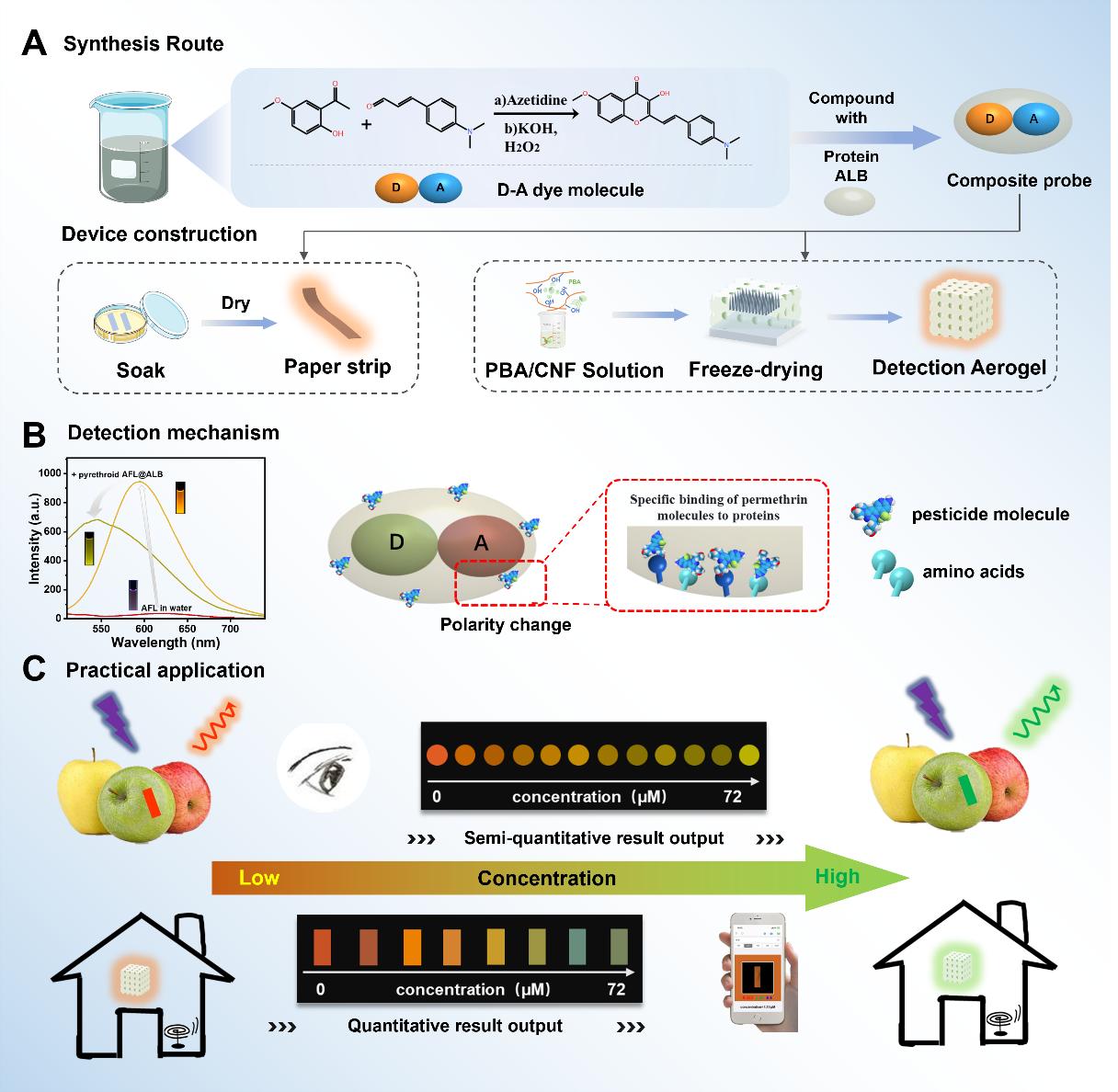
A team of researchers led by Prof. JIANG Changlong from the Hefei Institutes of Physical Science of the Chinese Academy of Sciences, has developed a fast and simple way to detect harmful pesticide residues, with results visible to the naked eye in just 10 seconds.
"We created a new fluorescent probe that lights up in different colors when it comes into contact with pyrethroids," said LIU Anqi, a member of the team, "It' s a widely used type of insecticide found in many household and agricultural products.”
The study was published in Analytical Chemistry recently.
While effective against pests, overexposure to pyrethroids can cause health issues such as dizziness and breathing problems. Detecting them usually requires lab equipment and time-consuming procedures. But this new probe offers a much faster and easier solution.
In this study, the technology works by combining a special fluorescent dye with a common protein, forming a molecular complex that glows yellow under UV light. When pyrethroids are present, the glow quickly shifts to green. This color change, which happens in just 10 seconds, can be clearly seen by eye.
Tests showed that the probe could detect a wide range of pesticide concentrations with high sensitivity. For practical use, the researchers also developed a portable system that allows users to snap photos of the glowing sample using a smartphone. By analyzing the image's color values, users can estimate how much pesticide is present—making it useful for quick checks in kitchens, on farms, or in markets.
To detect pesticide vapors—like those released by mosquito coils—the team went a step further. They embedded the fluorescent probe into a lightweight, sponge-like aerogel material. This aerogel traps airborne pesticides and shows a visible color change from orange to green. It’s one of the first tools of its kind designed for gas-phase pesticide detection.
This breakthrough opens new doors for fast, accessible pesticide monitoring, helping improve food safety and reduce health risks.

Synthesis route of supramolecular fluorescent probe AFL@ALB and the response mechanism of AFL@ALB-based fluorescent sensors to the liquid and vapor phases of pyrethroids. (Image by LIU Anqi)